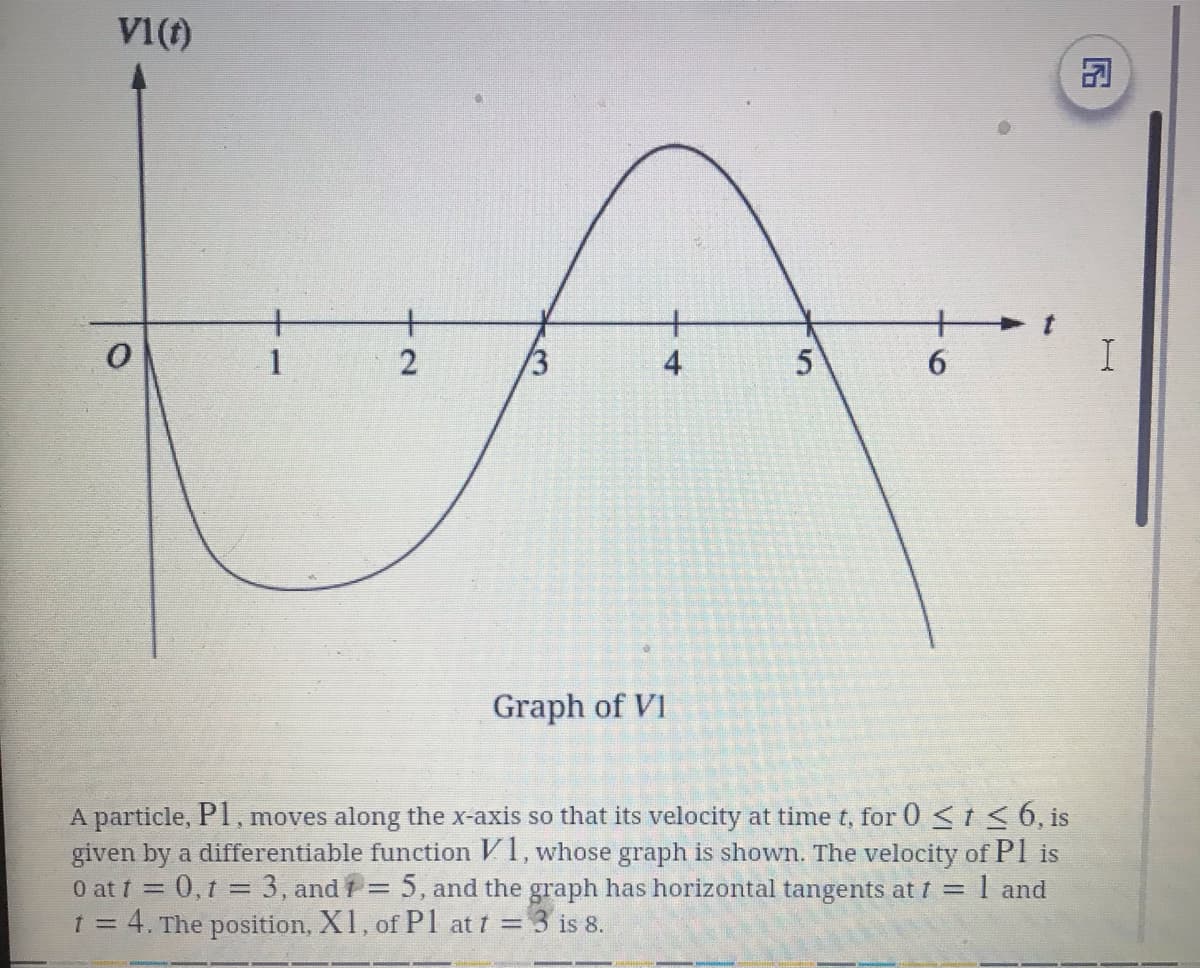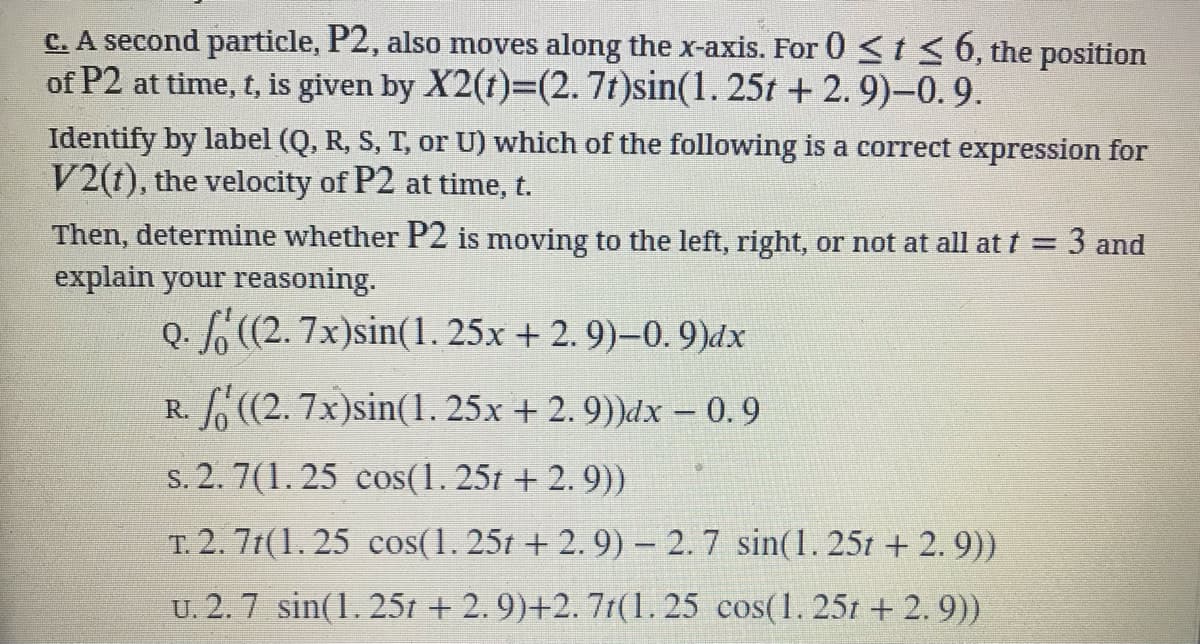A particle, P1, moves along the x-axis so that its velocity at time t, for 0 ≤ t ≤ 6, is given by a differentiable function V1, whose graph is shown. The velocity of Pl is 0 at 1 = 0, 1 = 3, and = 5, and the graph has horizontal tangents at 1 = 1 and t = 4. The position, X1, of Pl at t = = 3 is 8.
A particle, P1, moves along the x-axis so that its velocity at time t, for 0 ≤ t ≤ 6, is given by a differentiable function V1, whose graph is shown. The velocity of Pl is 0 at 1 = 0, 1 = 3, and = 5, and the graph has horizontal tangents at 1 = 1 and t = 4. The position, X1, of Pl at t = = 3 is 8.
Functions and Change: A Modeling Approach to College Algebra (MindTap Course List)
6th Edition
ISBN:9781337111348
Author:Bruce Crauder, Benny Evans, Alan Noell
Publisher:Bruce Crauder, Benny Evans, Alan Noell
Chapter1: Functions
Section1.2: Functions Given By Tables
Problem 32SBE: Does a Limiting Value Occur? A rocket ship is flying away from Earth at a constant velocity, and it...
Related questions
Question

Transcribed Image Text:VI(f)
+
1
+
+
/3
Graph of V1
A particle, P1, moves along the x-axis so that its velocity at time t, for 0 <t < 6, is
given by a differentiable function V1, whose graph is shown. The velocity of Pl is
0 at t = 0,1 = 3, and t= 5, and the graph has horizontal tangents at 1 =
1 = 4. The position, X1, of P1 at t = 3 is 8.
1 and
4-

Transcribed Image Text:C. A second particle, P2, also moves along the x-axis. For 0 < t< 6, the position
of P2 at time, t, is given by X2(t)=(2.7t)sin(1.25t + 2.9)-0.9.
Identify by label (Q, R, S, T, or U) which of the following is a correct expression for
V2(t), the velocity of P2 at time, t.
Then, determine whether P2 is moving to the left, right, or not at all at t = 3 and
explain your reasoning.
Q. (2. 7x)sin(1. 25x + 2. 9)–0. 9)dx
R. (2. 7x)sin(1. 25x + 2. 9))dx – 0.9
s. 2. 7(1. 25 cos(1. 25t + 2. 9))
T. 2. 7t(1. 25 cos(1. 25t + 2. 9) – 2. 7 sin(1. 25t + 2. 9))
U. 2.7 sin(1. 25t + 2. 9)+2. 7t(1. 25 cos(1. 251 + 2. 9))
Expert Solution
This question has been solved!
Explore an expertly crafted, step-by-step solution for a thorough understanding of key concepts.
This is a popular solution!
Trending now
This is a popular solution!
Step by step
Solved in 2 steps

Recommended textbooks for you

Functions and Change: A Modeling Approach to Coll…
Algebra
ISBN:
9781337111348
Author:
Bruce Crauder, Benny Evans, Alan Noell
Publisher:
Cengage Learning

Functions and Change: A Modeling Approach to Coll…
Algebra
ISBN:
9781337111348
Author:
Bruce Crauder, Benny Evans, Alan Noell
Publisher:
Cengage Learning